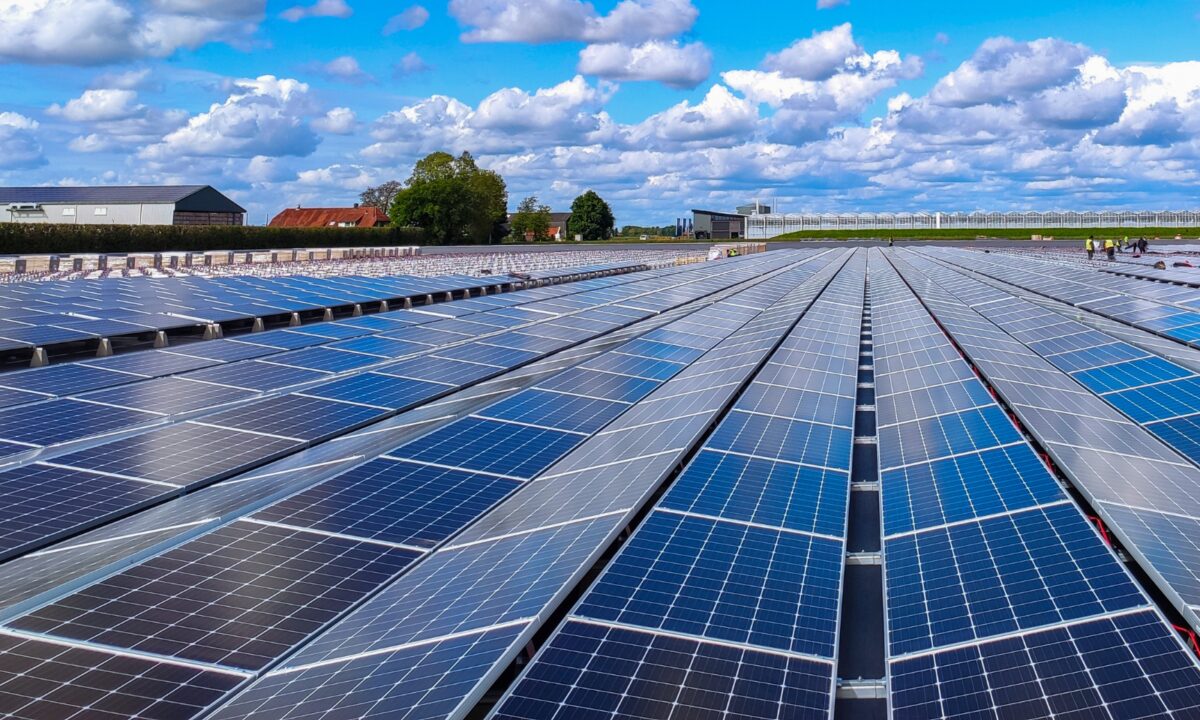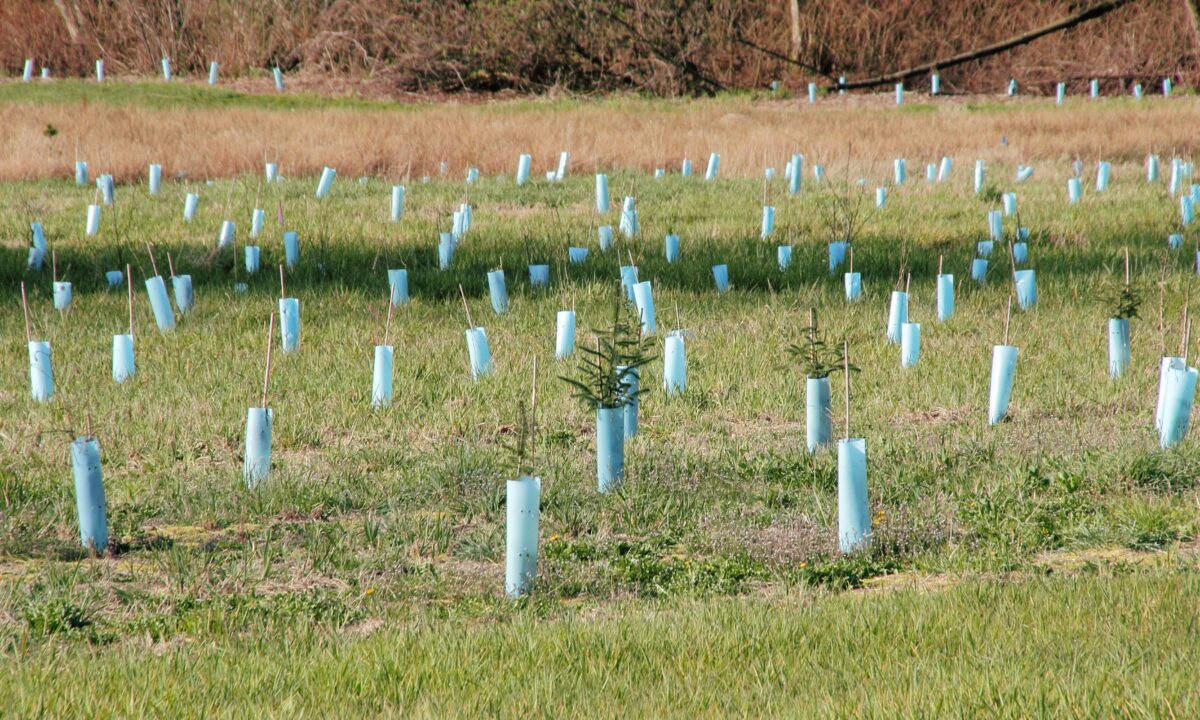Carbon insetting vs offsetting: what carbon insetting is, and why you need to know about it
The net zero transition will require additional investment of around $4tn each year, according to the United Nations Environment Programme Finance Initiative.
This is a huge challenge for national governments and financial institutions that raises an important question for businesses: when money is scarce, how should businesses finance their journey to net zero?
Too many rely on carbon offsetting – once seen as a quick and inexpensive route to decarbonise, but now often criticised as ineffective, poorly regulated, and used for greenwash.
What is carbon insetting?

Carbon insetting is a more effective strategy than carbon offsetting. To inset, an organisation will set an internal price for each tonne of carbon it emits and will then use this price to ‘charge’ itself, each year, based on its carbon footprint. This creates a fund that is ring-fenced for decarbonisation activities.
The managing director of the International Monetary Fund (IMF), Kristalina Georgieva, made the case for carbon pricing at last year’s COP: “I want to tell everybody who is willing to listen that a carbon price has proven to work”.
Carbon insetting vs offsetting

Carbon offsetting funds externally verified projects that aim to avoid and reduce future carbon emissions, or to mitigate and compensate for emissions that have already arisen.
By contrast, carbon insetting supports emissions reductions within an organisation’s own value chain. This leads to real carbon savings that reduce an organisation’s carbon footprint, rather than "neutralising” emissions for the purposes of carbon accounting.
Examples of insetting could include a business investing in solar panels at a key supplier’s factory; a retailer researching products that are repairable or made from more sustainable materials; or a brewery that works with its hops farmers to reduce nitrogen fertiliser use, or collaborates with partners to improve the efficiency of refrigeration units.
Insetting should be recognised as an internal investment rather than an external cost. It creates investment opportunities to reduce operational costs, for example through greater energy efficiency, and in some cases generate additional revenue, for example by generating renewable energy.
Why is carbon offsetting controversial?

Last year the Guardian revealed that "more than 90% of rainforest carbon offsets by the biggest certifier are worthless". By contrast, insetting diverts finance away from offsetting activities of questionable value to fund visible projects that will achieve real and tangible reductions in emissions. This creates a mechanism for companies to accelerate decarbonisation and play their part in funding the net-zero transition.
Stakeholders expect businesses to have a practical carbon reduction plan – and to demonstrate progress
Insetting also enables businesses to meet the expectations of their key stakeholders. Over the last few years, there has been a notable growth in public awareness and concern around climate change. This has led to greater scrutiny of business claims and increased the expectations that the public places on businesses – 77% of the UK public now believe businesses should have a legal responsibility to the planet and its people.
Offsetting was once seen by companies as a quick route to decarbonise, as well as being relatively inexpensive. It is now regularly criticised in the media as a ploy to greenwash and avoid meaningful action to decarbonise.
The Advertising Standards Authority recently updated its guidance on ‘carbon neutral’ claims – which usually rely on offsetting – while the Financial Conduct Authority notes that “financial markets will increasingly want better information on how companies plan to adapt their business models, their operations and their products and services”. Insetting helps to provide this transparency.
And more and more people now choose to work for organisations that align with their values, with one in five UK workers having turned down a job based on an organisation’s poor ESG credentials.
Carbon reduction will be a regulatory and risk management consideration
Insetting also supports businesses to futureproof their operations from possible future carbon taxation schemes. It ensures that carbon becomes an inherent part of decision-making and begins to build up funds to implement decarbonisation activities ahead of mandatory taxation.
Governments have been slow to adopt explicit carbon pricing and taxes across whole economies. However, as the IMF’s Kristalina Georgieva noted, it is “possible to achieve the same result – of making high-carbon activities reflect their true costs to society – using regulation, and by cutting the bad subsidies that encourage fossil-fuel use.”
In line with this approach, a new EU Carbon Border Adjustment Mechanism will take effect in 2026. It will align with the phase-out of the allocation of allowances currently permitted under the EU Emissions Trading System, ensuring that all high-emitting production both within and beyond the EU is incentivised fairly to decarbonise.
Leading companies are embracing insetting to generate carbon reduction funds
According to CDP, there was an 80% increase in the five years to 2020 in companies intending to set an internal carbon price. Nearly half of the largest 500 global companies are using an internal carbon price or planning to do so. Adoptees include retailers ASDA and IKEA, and the healthcare company Novartis, which has endorsed a carbon price of US$100 per tonne, “in line with the cost of climate change to society as indicated by the World Bank”.
How can Bioregional help your business?
To find out more about how carbon insetting can put your business at the forefront of corporate action to fund the net-zero transition, insulate it from regulatory change, and meet the demands of customers, staff, and regulators, contact Katri Hastings below.
View our full list of sustainability solutions here, including carbon accounting and net-zero strategies.







